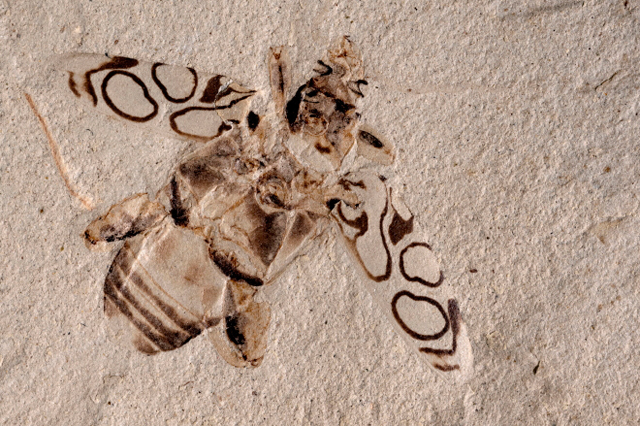Beautiful Beetle Honours Sir David Attenborough
A stunning fossil of a beetle that had been on display at the Denver Museum of Nature and Science (Colorado), has been identified as a new species and named in honour of the English naturalist and broadcaster Sir David Attenborough. Named Pulchritudo attenboroughi (Attenborough’s beauty), the fossil originates from the famous Green River Formation and it is believed to be around 49 million years old.

Incorrectly Labelled
In the Museum’s exhibition display the fossil was labelled as a longhorn beetle, however, Senior Curator of Entomology at the Denver Museum of Nature and Science, Frank Krell had doubts so he invited Francesco Vitali of the National Museum of Natural History of Luxembourg, an authority of fossil beetles, to examine the fossil.
The crooked hind legs identified in the specimen, gave away the beetle’s true affinity. The fossil represents an example of a frog-legged beetle, a widespread family of beetles, which are sometimes referred to as kangaroo beetles, as they are found in Australia as well as Africa, Asia and South America.
Writing in the academic journal “Papers in Palaeontology”, the researchers concluded that the 2.2 cm long fossil represented a female frog-legged beetle from the subfamily Sagrinae. This is only the second known fossil representative of this beetle subfamily known from North America. Beetles of the subfamily Sagrinae are not found in North America today, but the authors noted that Atalasis sagroides from Argentina is remarkably similar to the fossil specimen.

Honouring Sir David Attenborough
Sir David Attenborough has been honoured on numerous occasions by having new species (living and extinct) named after him. For example, he has had a placoderm (Materpiscis attenboroughi), as well as the pliosaurid Attenborosaurus conybeari and a Cretaceous damselfly – Mesosticta davidattenboroughi named after him. Sir David might be ninety-five years young, but his influence on the scientific community as well as the wider public is undiminished.
In the scientific paper, naming and describing this new genus of beetle from the Eocene Epoch, the researchers wrote that the specific name attenboroughi is from the Latinised form of the surname Attenborough and they state that this fossil genera is:
“dedicated to Sir David Frederick Attenborough, broadcaster and naturalist, who has nothing to do with this fossil but has been inspiring the authors, their family down to the littlest, and millions of others by his unsurpassed documentaries on the natural world, extant and bygone. Nobody imparts the grandeur and beauty of nature more impressively than Sir David. This fossil, unique in its preservation and beauty, is an apt specimen to honour the great man”.
A genus of beetle from the Eocene honours Sir David Attenborough.
The scientific paper: “Attenborough’s beauty: exceptional pattern preservation in a frog‐legged leaf beetle from the Eocene Green River Formation, Colorado (Coleoptera, Chrysomelidae, Sagrinae)” by Frank-Thorsten Krell and Francesco Vitali published in Papers in Palaeontology.
The Everything Dinosaur website: Prehistoric Animal Models and Toys.


